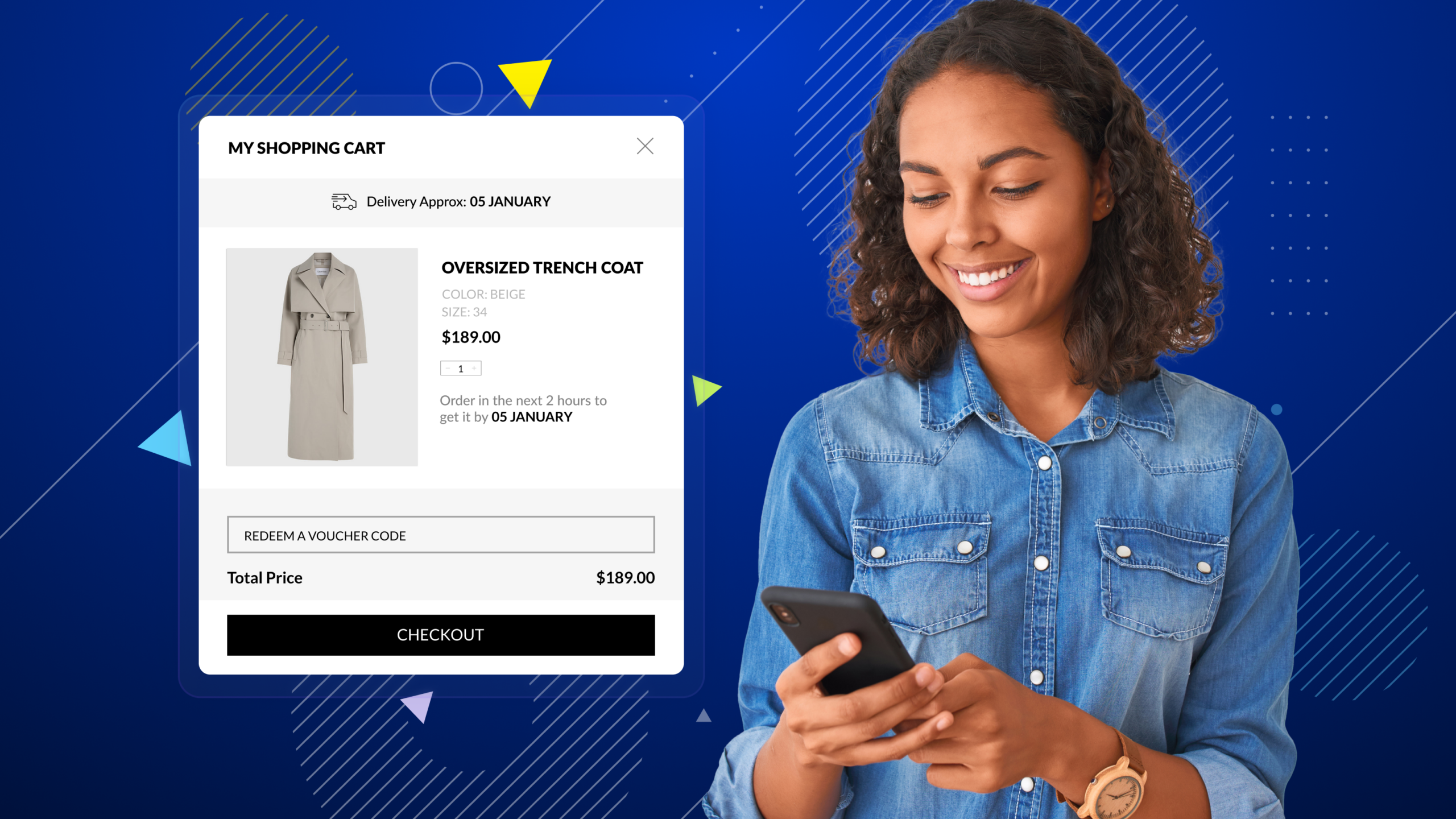Contents
Provide shoppers with a faster and more confident decision-making experience with parcelLab Promise.
Learn moreWhat is a delivery date estimate?
Published on: November 16, 2023
Updated: January 17, 2024
A delivery estimate is the predicted date (and sometimes time range) when a product will be delivered to the recipient. Delivery estimates are typically used in ecommerce, in which brands provide an estimated delivery time frame to give customers an idea of when they can expect their products to arrive if they order by a specific date.
Amazon, for example, has delivery date estimates for many of its products. The e-tailer will typically say something along the lines of:
“Free delivery Tuesday, August 29 on orders shipped by Amazon.”
and
“Fastest delivery Tomorrow, Aug 25. Order within the next 3 hours.”
The main purpose of a delivery date estimate is to provide customers with clarity regarding the expected arrival time of their orders. That way, they can plan and make purchasing decisions based on that information.
How can companies provide a delivery date estimate?
Delivery estimates can improve the shopping experience and enable customers to make more informed decisions around when to order and which shipping option to choose. That’s why many forward-thinking brands choose to display delivery estimates on their product or checkout pages.
If you’re looking to implement delivery estimates, here’s how to get it right.
| Merchant action | Description |
|---|---|
| Have real-time stock monitoring | Keep your inventory, ecommerce, and order management systems are updated in real-time |
| Integrate with shipping carriers | Leverage carrier API integrations, or better yet use a solution like parcelLab which lets you display a "delivery date promise" |
| Establish shipping rules | Define shipping zones and understand the average delivery times to those zones |
| Factor in order processing time | Account for the time it takes to process an order—including picking, packing, and preparing the order for dispatch. |
| Leverage dynamic delivery calculation | Factor in current order volume, historical shipping times, and other variables |
| Provide a buffer | Account issues like an unexpected surge in orders, a delay at the shipping carrier's hub, etc. |
| Regularly review and adjust | Gather and analyze data on actual delivery times versus estimates. |
| Use the right technology and software | Invest in a robust and tightly-integrated ecommerce tech stack that lets you implement delivery date estimates with ease |
Have real-time stock monitoring
Ensure that your inventory, ecommerce, and order management systems are updated in real-time as items are purchased or restocked. This helps in providing accurate estimates, especially if an item needs to be back-ordered.
Integrate with shipping carriers
Most major shipping carriers offer API integration, which can be incorporated into the ecommerce or post-purchase platform. This integration allows your system to get real-time shipping rates and delivery estimates based on the carrier’s data.
parcelLab’s Convert product suite, for example, enables you to display a delivery date promise on your product pages. Delivery estimates are more effective than simply displaying shipping speed (e.g. 3-7 days).
Establish shipping rules

You should also have a handle on your shipping methods. Different shipping methods (standard, expedited, overnight) have varying delivery times. Make sure the system knows the expected time for each method.
Factor in order processing time
Account for the time it takes to process an order. This includes picking, packing, and preparing the order for dispatch. Some companies can do this within hours, while others might take a day or two.
Leverage dynamic delivery calculation
Utilize algorithms that factor in current order volume, historical shipping times, and other variables to provide the most accurate delivery estimates.
If you’re using parcelLab, this is done automatically. We enable you to display unique dates for each carrier with a machine learning model and unique algorithm that accounts for delivery methods, carrier service levels, holidays, past performance, and trending data.
Provide a buffer
Always account for some margin of error. Whether it’s an unexpected surge in orders, a delay at the shipping carrier’s hub, or any other unforeseen hiccup, it’s wise to have a slight buffer.
Regularly review and adjust
Continuously gather and analyze data on actual delivery times versus estimates. Adjust the system’s parameters based on this feedback loop to improve accuracy.
Use the right technology and software
We’ve alluded to this earlier, but be sure to invest in an ecommerce tech stack or third-party solutions that specialize in dynamic delivery date estimation. Many of these tools come with advanced features that consider all the variables and help in providing customers with accurate delivery estimates.
And once an order is placed, you can further improve the post-purchase experience through proactive post-purchase communications. This can include order notifications, delivery updates, and more.
As always, when sending customer communications, always adhere to regulations like GDPR and follow the guidelines of the Federal Trade Commission.
Why are delivery estimates important?
As mentioned above, delivery date estimates are beneficial for both brands and their customers. But if you’re still considering whether or not to implement them here’s a breakdown of how delivery date estimates provide value.
Improved customer satisfaction
Customers can decide when to order, especially if they need the product by a specific date (e.g., for a birthday or event). And for items that may require someone to home upon delivery (like furniture), customers can plan to be available. Plus, a brand that consistently meets its delivery estimates builds trust with its customers.
Increased operational efficiency
With accurate delivery estimates, you can optimize resource allocation, such as staffing for packing and shipping, based on delivery commitments. Additionally, delivery estimates can be a metric to evaluate the performance of shipping carriers and make informed decisions on partnerships.
Reduction in customer service inquiries
When customers know when to expect their orders, they’re less likely to ask about their order status, which saves time for both the customer and the business. This also means fewer bad reviews and consumer complaints.
Competitive advantage
In a market where multiple businesses might offer similar products, reliable and fast delivery can be a differentiating factor that sways customers.
Decrease in returns and cancellations
When customers are informed about the delivery time, they are less likely to cancel their orders or initiate returns due to uncertainty or late deliveries.
Learn More About parcelLab's Product Suites
Provide a predictive delivery date that increases conversions, reduces uncertainty, and improves customer satisfaction.
Learn moreEnhance your post-purchase journey with personalized communications that keep customers informed every step of the way.
Learn moreTurn potential customer dissatisfaction into an opportunity for revenue retention by digitizing your returns process.
Learn moreTransform Your Post-Purchase Experience
Learn more about how parcelLab can get you up and running quickly.
Book a demo